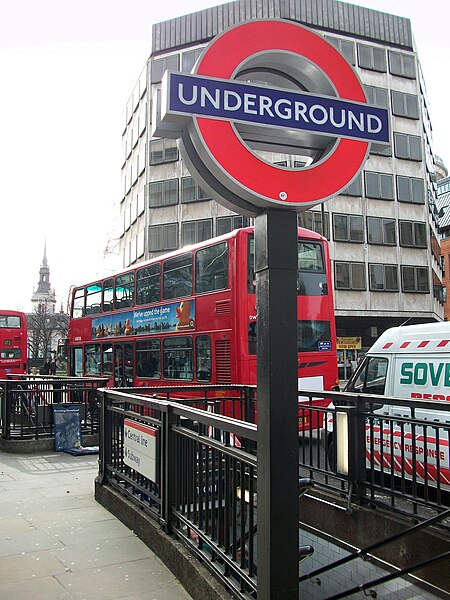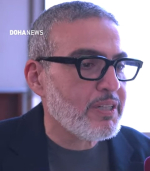
The Mayor of London, Sadiq Khan, has today announced that all London Underground, Overground stations and Dial-a-Ride vehicles now have life-saving public access defibrillators available to
be used if a passenger suffers cardiac arrest.
Last year, the London Ambulance Service responded to around 13,000 cardiac arrests across the capital. Fewer than one in 10 people currently survive a cardiac arrest and for every minute that goes by without life-saving intervention like CPR and defibrillation, the chances of a person surviving cardiac arrest decrease by 10 per cent.
City Hall, the London Ambulance Service NHS Trust (LAS) and Transport for London (TfL) have now completed a massive joint rollout of defibrillators across the transport network, which includes most main bus stations, and piers. This means that every single borough now has a TfL defibrillator that any Londoner or commuter can access to help someone in cardiac arrest and TfL continues to explore how they can further provide even more across the network.
Before Sadiq became Mayor in 2016, defibrillators were installed in a very limited number of busy stations located in central London so reaching full coverage, which goes beyond to the outer boroughs, is a significant milestone for TfL, LAS and City Hall. A number of historic defibrillators have been coming to the end of their life so this has been about upgrading those too.
The Mayor made the announcement at Highbury and Islington Underground station to mark World Restart a Heart day. He met Estelle Williams, a 999 call supervisor now working as a trainee clinical tutor at LAS, and her father Eddie. The Mayor heard how Estelle sprang into action after Eddie collapsed and stopped breathing while watching TV. She used the skills learned in her LAS CPR training and was able to keep Eddie’s heart pumping oxygen to his brain until an ambulance arrived. Eddie survived, and has just celebrated his 72nd birthday.
In the event of a crisis, we know that every second counts. While ambulance crews arrive, having the skills and kit nearby means you can make sure the heart is pumping and the brain isn’t being starved of oxygen.
Last year the Mayor trained as a London Lifesaver, where he learned to how to perform CPR and use a defibrillator, as well as other basic life support skills.
Today the Mayor, alongside LAS and TfL has also launched a short training video, presented by the BBC’s Dr Chris van Tulleken and Community Resuscitation Training Officer Alexa Barton from LAS, which demonstrates how to perform chest compressions and use a defibrillator.
From today, Londoners will also be able to find heart-shaped QR codes on every defibrillator in the TfL network. These QR codes take you straight to a video on City Hall’s website which will show you how to perform CPR and use the defibrillator, using techniques from the LAS London Lifesaver training.
The LAS has also today launched the London Lifesavers campaign in schools, starting with Year 8 students. More than 200 students from six schools will be trained with CPR and how to use a defibrillator at City Hall today.
The Mayor of London, Sadiq Khan, said: “For every minute that goes by without life-saving intervention like CPR and defibrillation, the chances of a person surviving cardiac arrest decrease by 10 per cent. That’s why I’ve made good on my commitment to maximise the numbers of defibrillators across the city, and worked with TfL and LAS to ensure every underground and overground station as well as major bus stations, dial-a-ride vehicles and all TfL piers have one publicly available.
“It’s important that Londoners not only have the kit but the skills to step in and assist when someone is having a cardiac arrest, which is why I’m proud that we have launched a short training video, which demonstrates how to perform chest compressions and use a defibrillator.
“This rollout and education drive will ensure people travelling in our city feel safe and confident that they will be helped in the case of an emergency, and supports my aim to continue building a safer and fairer London for all.”
Lilli Matson, TfL’s Chief Safety, Health and Environment Officer said: “We are absolutely delighted to be working in partnership with the Mayor and our colleagues in the London Ambulance Service to support this vital life saving initiative. We know every second counts when saving a life, so we are pleased that as well as having first-aid trained staff at stations, our customers will have quick access to a defibrillator across the Tube and Overground”
Daniel Elkeles, Chief Executive of London Ambulance Service said: “We are proud to support this life-saving programme to install defibrillators across the TfL network, and delighted to see it officially launch today.
“We want London to be one of the best cities in the world when it comes to responding to cardiac arrest. The good news is that we have some of the best response ambulance response times in the country for these emergencies but every second counts before an ambulance arrives, and international evidence shows that increasing bystander intervention is the key. We need to build a social movement that makes CPR training one of the things that lots of people know how to do and we need to get defibrillators in every corner of the city. We would urge people to get in touch with us and train to become a London Lifesaver – with additional defibs across the capital from today, learning these skills could be the difference between life and death.”
Dr Chris Streather, Regional Medical Director & CCIO at the Medical & Digital Transformation Directorate said “I am delighted about this initiative. The ready availability of defibrillators is a key step in improving survival in out of hospital cardiac arrest. Seconds and minutes really do matter and proximity to life saving equipment will save lives. Heart disease is one of our most significant causes of premature death and this equipment make a massive difference. The mayor’s leadership on this has been of critical importance. It goes hand in hand with the education of Londoners in core life saving skills, and it is great to see the work the ambulance service are doing with schools which perfectly complements the delivery of these additional defibrillators.”
London Ambulance Service Chief Medical Officer Dr Fenella Wrigley, said: 'When someone is in cardiac arrest, every second counts and early chest compressions and defibrillation are key to survival.
"Having more defibrillators in public places, including our busy tube stations, and getting more people trained to use them and learn simple life-saving skills will help save more lives." Photo by RanZag, Wikimedia commons.




































